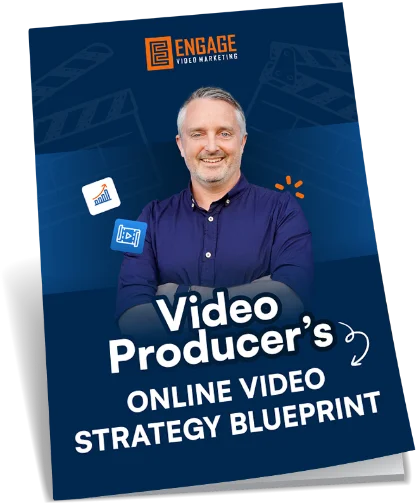So, you’ve got your awesome, shiny new videos for your business, and you’re thinking where should I upload my videos? How do I even get them on my website? You might be thinking YouTube or maybe Vidyard or perhaps your website, dude is telling you to host them on the website itself. Well, my friend let’s overcome the overwhelm and make this simple for you.
It’s a super common question that I get asked regularly by businesses getting started with video marketing. Where should I host my videos, YouTube Vimeo, or my own service? The answer to this question can vary based on what you’re trying to achieve with your videos. However, there are a few key considerations to help make this decision easier.
First of all, let’s discuss each of these main options starting with YouTube. As you might know, YouTube is the juggernaut of online video platforms. Established all the way back in 2005 as a video platform for dating, it quickly became the place to share videos of all sorts from holiday blogs, to music videos, and of course, videos for business. Having been acquired by Google in 2016, it’s now ranked as the second largest search engine in the world, second, only to Google itself, and it boasts over 13 million daily active users on the platform. So if your goal for your video is to get in as front of many eyeballs as possible, then YouTube is a complete no brainer. When you combine this with YouTube robust and stable embedded video player, it can often be the simplest and most effective way to host your brand videos on your website.
Youtube Downside #1: Less control over the appearance of the video player
There are some downsides to YouTube. You have less control over how your video player looks on your site. The YouTube embedded player allows for minimal customization. You basically get what you get when it comes to the player style, although you do have some minor adjustments that can be made using some of the advanced embed parameters.
Youtube Downside #2: Less control over where you
You also have less control over where your video is viewed as the video will live on your YouTube channel’s video watch page, either publicly available, or even when privacy is set to unlisted, it’s still accessible on the watch page. So, if you want to restrict your videos to only being viewed on specific pages of your website and with an understanding that you will limit the search results and the potential reach, then YouTube may not be the best option for you.
YouTube Downside #3: YouTube wants to send your viewer to watch other videos
The final downside is that YouTube’s mission is to keep people watching YouTube videos or their advertising. So either through suggested videos that appear at the end of your embedded YouTube videos or ads that are inserted throughout, the person viewing your brand videos on your website, they might find themselves pulled away from your website and going rapidly down the YouTube rabbit hole.
A bonus tip here is to make sure that when you are embedding your videos onto your website, using the YouTube embed code, add the following parameter to the code – rel=0
By adding rel=0, you’re actually forcing YouTube to only suggest videos from your own YouTube channel at the end of the video. This is much more preferable, but still it doesn’t allow you to control the full viewer experience. This is where Vimeo or similar private video hosting services come into consideration.
So, Vimeo is a video hosting platform, which quite simply allows you to have much more control over how your videos are used and engaged with online. To really make use of Vimeo for your brand videos, you’ll need to consider one of the paid plans, raging from less than 10USD a month and the payment tiers increase as you gain access to more valuable and robust functionality.
Vimeo also tends to maintain your videos quality at a higher level through the way that it compresses videos for online playback using a typically higher bit rate than YouTube. So, if quality is important to your videos, then you may not want to be using YouTube. You may want to be using something like Vimeo instead.
Vimeo Benefits: Allows full control over where your videos are embedded and viewed.
The primary reason why you’d want to choose a platform such as Vimeo, however, is because it allows you to have full control over where your videos are embedded and how they’re experienced by your audience. As Vimeo makes its money by charging the video creative for their account, that means they don’t need to serve ads on your content like YouTube does. And the other thing is that using Vimeo’s embed controls, you can limit where your videos can be embedded right down to the domain and page level. So if you want to ensure a particular video is only viewed on a specific product page on your website, you can control that. Do you want to restrict your videos to only being viewed on your domain? You can do that too. If you want to password protect the video, that’s easy with Vimeo.
Now it’s important to mention that there are quite a number of other video platforms similar with these functions to Vimeo, such as Wistia and Vidyard. However, regardless of the hosting platform chosen, the decision-making process is still pretty much the same.
What about hosting videos on your website directly not using a third party platform at all? Well, although this is certainly possible, it’s very rarely something that I’d recommend, as hosting video on your own servers can be plagued with technical issues, such as bandwidth, significant page speed problems, and low quality video bit rates.
So the simple answer here is: DON’T DO IT.
Choose the right video hosting platform instead. Let them do the heavy lifting when it comes to displaying and playing your videos on your website.
So when you’re considering exactly what to do and where to put your videos for your business online, make sure you’re thinking strategically about the platform that you choose and make the right decision based on what I’ve shared. Although YouTube may be the first platform that you think of, and it will be the best choice for maximum exposure on your videos, it may not be the right choice for you. Maybe another hosting platform would be better. Hit me up in the comments, if you have any questions or want me to dive deeper into any areas of video marketing strategy in a future video.



